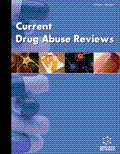Abstract
In the last decades, the goal of creating a unique and complete model of alcohol use and alcoholism has been replaced by a myriad of different animal models, each addressing a specific feature of problematic alcohol consumption. This mini-review highlights selected findings in the field of alcohol abuse and dependence, as found through the use of animal models. There are models (e.g., drinking in the dark, drinking after alcohol adulteration or alcohol deprivation) in which animals self-administer alcohol, that are useful to analyze determinants and consequences of binge drinking, progression from casual to problematic alcohol use and relapse or loss of control over alcohol drinking. In other models (e.g., conditioned place preference, conditioned taste aversion, ethanol-induced behavioral sensitization) alcohol dosing is precisely controlled by the experimenter. These models are useful to study motivational (i.e, appetitive, aversive and negative reinforcing) effects of alcohol and neuroadaptive changes that occur after repeated alcohol exposure. The study of age-related differences in reactivity to alcohol provides yet another avenue for analyzing alcohols acute and chronic consequences. Ethanol interacts with several neurotransmitter (dopaminergic, glutamatergic, opioidergic and cannabinoid) and neuromodulators and these interactions are involved in the development and maintenance of alcohol selfadministration. The findings described in the review, however, indicate a key role of the endogenous opioid system, notably in the mediation of alcohols positive rewarding effects. The Review also highlights the need to further assess the inter-relationship between different indices of ethanols motivational effects as well as their association with alcohol intake and preference.
Keywords: Ethanol, addiction, ontogeny, behavioral sensitization, self-administration, opioid system, drug, loss of control, Mental Disorders, neurotransmitter systems, ventral tegmental area, chronic basis, drinking, glutamatergic systems, neurotransmitter, gabaergic, glutamatergic, opioidergic, sensitization, palatable, quinine, naltrexone, psychoactive drugs, stress, anxiety, problematic drinking, freezing, capabilities, adolescence, citric acid, anti-anxiety, tachycardia, infant, psychostimulants, Blood, microinfusion techniques, antagonist, hyperactivity, ligand, mesocorticolimbic, analogous, saline, metabolite, aldehyde dehydrogenase, neurotransmission, propionic acid, drug-alcohol, haloperidol, endogenous opioid system, enkephalinergic, mRNA's, sedative effects, hypersensitivity, bioavailability, euphoria, phenotypes
 12
12















